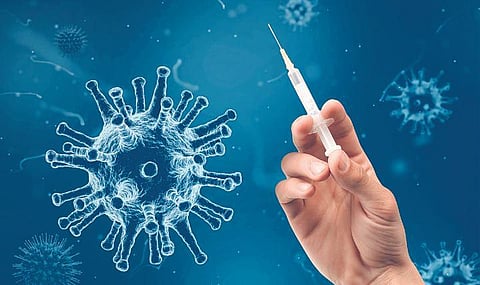

Covid is back yet again, even before curtains could be drawn over 2023. However, the year would be remembered for the rise of several other infections and viruses as well.
From dengue, leptospirosis (rat fever), measles, H1N1, respiratory syncytial virus, nipah and zika, India reported it all.
The most concerning and burning issue of all was how the young are dying of sudden heart attacks! Headlines were made when in Gujarat, during the garba that marked the Navratri festivities, 10 people, including one as young as 17 years, died of sudden heart attack within 24 hours.
This prompted Union Health Minister Mansukh Mandaviya to caution people, especially those who suffered from severe Covid-19 infections, not to exert themselves too much while exercising and to stay away from hard labour for some time.
Prompted by concerns about a potential link between Covid-19 infection and Covid vaccination, the Indian Council of Medical Research (ICMR) conducted a multi-centric case-control study on sudden deaths among young adults in India and found that vaccination did not increase the risk of premature deaths. The study said vaccination was a mitigating factor, reducing sudden deaths in the 18-45 age group.
A study by LocalCircles, India’s leading community social media platform, also found that more young people are experiencing brain stroke, cardiac arrests, and heart attacks in India since the Covid-19 outbreak.
Another rising disease burden is diabetes. An ICMR study found that India is sitting on a diabetes time bomb. It said that there are an estimated 101 million people in India who have diabetes, 136 million prediabetes, and 315 million people were diagnosed with hypertension.
According to Dr V Mohan, chairman of Madras Diabetes Research Foundation (MDRF), which collaborated with the Indian ICMR for the first-of-its-kind national survey, India will be the ‘diabetes capital of the world’ in five years.
However, much of the year saw Indians suffering for weeks, some even for months, with cough, cold, runny nose, fever, sore throat, muscle pain, body chills, fatigue and headaches. The viral infection was so severe that it left many patients exhausted physically and mentally. The flu cases with Covid-like symptoms were due to Influenza A subtype H3N2, which circulated widely in India and led to hospitalisations.
According to Dr Rajeev Jayadevan, co-chairman of the National Indian Medical Association Covid Task Force, in the past 12 months, the world noticed a rise in several types of infections besides Covid-19, and India was no exception. “Speculations apart, there is little evidence that Covid-19 might have directly led to these infections. However, it is clear that the pandemic played an indirect role in several health problems,” he said.
Bizarre enough, the year also saw a series of allegations over spurious India-made drugs, mainly cough syrups. The year began with the WHO issuing an alert against two Indian cough syrups linked to the deaths of 18 children in Uzbekistan.
As more such alerts were sounded against India-made drugs through the year, hurting the country’s image as the ‘pharmacy of the world’, the government cracked down on firms making spurious drugs. But as the year ends, the focus again will be on Covid-19 as the new subvariant, JN.1, is leading a spike in many countries, including India.
India is standing at the same juncture it was last year with Covid knocking at the doors again. Time will tell how Covid-19 manifests itself in 2024 — four years after it was detected in Wuhan, China — not only in India but around the world too.
Relief to patients with rare diseases
Next year will bring some much-needed relief to children suffering from 14 rare diseases. While four India-made cost-effective generic drugs were rolled out this year, the rest of the drugs will be launched in the coming year. These will bring down the cost a hundredfold.
Boost to health infrastructure
The coming year will see the Centre working towards meeting the Budget target of 157 new nursing colleges alongside medical colleges set up since 2014. Also, of the 16 new AIIMS, some may start operating next year.